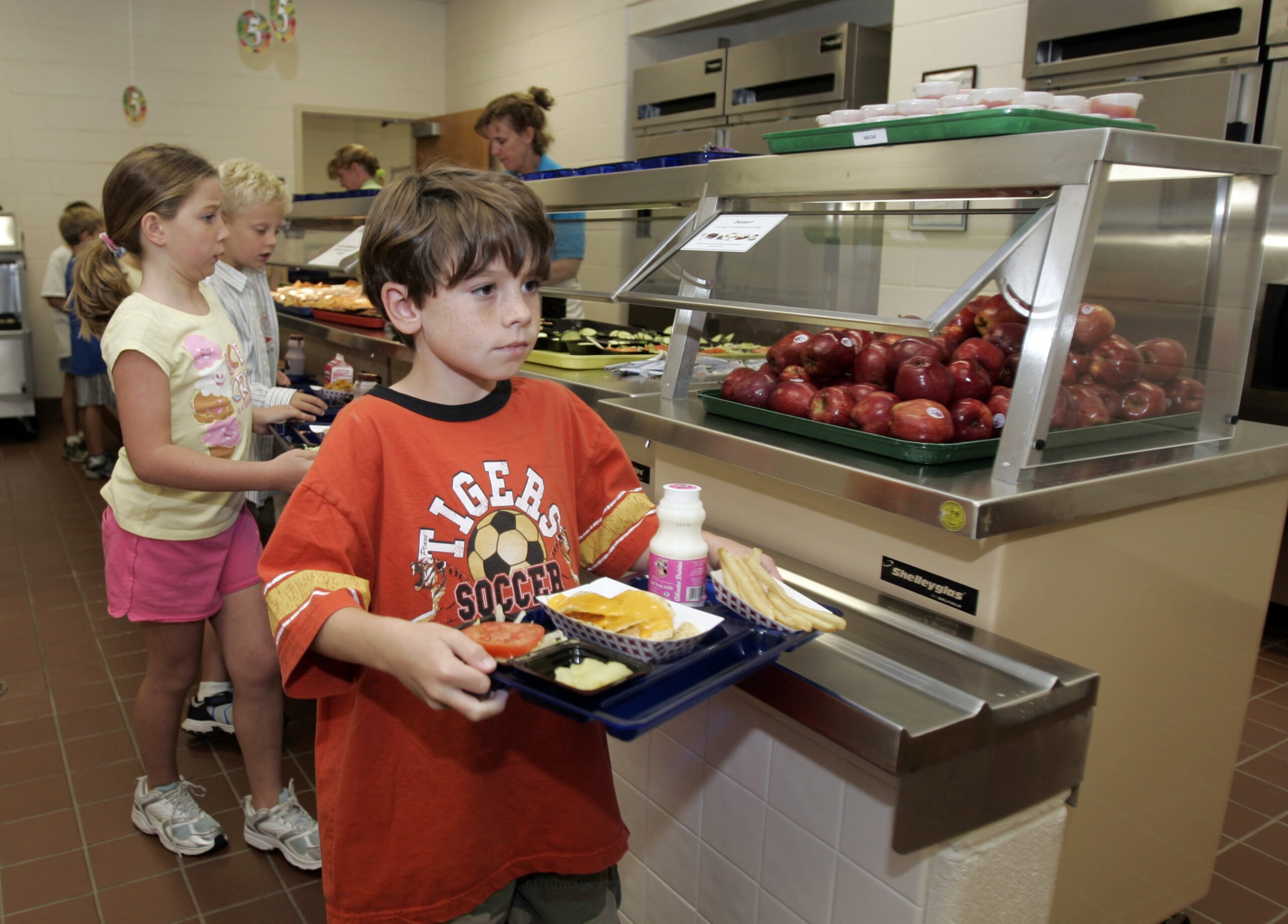Summer Meals Program Aims to Bridge Nutrition Gap for Ga. Students

**FILE ** In a Sept. 4, 2007, file photo Trevor Nouvel and Ali Parker go through the serving line in the cafeteria at Sharon Elementary School in Suwanee, Ga. According to the School Nutrition Association, which represents workers who provide the meals, almost 80 percent of schools surveyed by the organization are reporting an increase … Continued
John Bazemore / Associated Press
State data show 62 percent of children in Georgia’s public schools receive free and reduced-price meals during the school year. But just 17 percent of those kids take advantage of free summer meal programs. Some state agencies and nonprofits are trying to boost that number.
The Georgia Department of Early Care and Learning, the Georgia Department of Education, the U.S. Department of Agriculture, the Fulton County Schools, the city of Hapeville, and the Atlanta Community Food Bank, and Quality Care for Children are just some of the organizations participating in a free summer meals program for Georgia children.
Hapeville City Manager William Whitson said he benefited from a similar program growing up.
“I think back many summers ago, and I can remember looking in the refrigerator and seeing it quite bare,” he said.
One of the challenges the program faces is finding distribution sites that are easy for families to get to.
“In general, these programs are very accessible,” said Kyle Waide, president and CEO of the Atlanta Community Food Bank. “In certain communities we’re still working on accessibility. But the best thing to do is find a meal site that’s close to you. And then, if there’s not one that’s accessible, reach out to our network at the Food Bank and we can help connect you with some other resources.”
To find locations, families can text “FOODGA” to 877-877. The Atlanta Community Food Bank’s website (ACFB.org) also has a GPS-enabled map of available sites.
The ACFB is adding 10 new sites this year where families can get groceries in addition to free meals.
9(MDAxODM0MDY4MDEyMTY4NDA3MzI3YjkzMw004))








